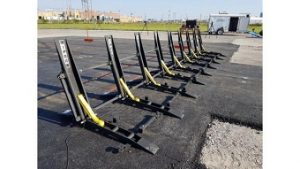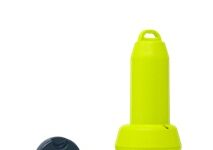
Mifram Security Ltd. – a leader in the development and production of defensive solutions including anti-terror, threat protection and fortifications for military, law enforcement and civilian uses – introduces its innovative line of vehicle barriers for prevention of vehicle-ramming terror attacks at Milipol Paris 2017. The company’s range of unique portable road barriers includes models that stop vehicles weighing up to forty (40) tons, countering today’s most prevalent threat.
Mifram will introduce three (3) new barriers that are easy to operate, don’t require special training to set up, are portable, and can be easily transported on standard vehicles. They are made of strong yet elastic materials that absorb the energy of the vehicle, allowing the transfer from kinetic energy to potential energy, shifting the momentum of the attacking vehicle to the ground to bring the vehicle to a stop.
The FBM flat drive-over folded barrier is a multipurpose, portable, fast, effective anti-ram vehicle barrier. The modular system can stop vehicles weighing up to 2,500 Kg – including cars, trucks, tractors, motorcycles, and ATVs. The barrier is ideal for deployment in hot zones and urban areas. Individual units fit together to suit varying vehicle and road sizes.
The PYRAMID drive-over folded barrier for heavy vehicles is a one-of-a-kind, two-way barrier that blocks entrances and exits at the same time, and is ideal for deployment in hot zones and urban areas. The modular anti-ramming barrier system has been demonstrated to bring vehicles of up to 7 tons to a complete stop. It requires no concrete foundation, can be activated either hydraulically or manually, can serve either as a temporary or permanent barrier, and during times of low alert, it can be used as a traffic slowing bumper.
The RMB stops heavy trucks and semi-trailers weighing up to 40 tons. The barrier allows the transfer of kinetic energy to potential energy, causing the vehicle in the process of stopping to tip upwards in the air, thus minimizing the damage caused by the impact.











